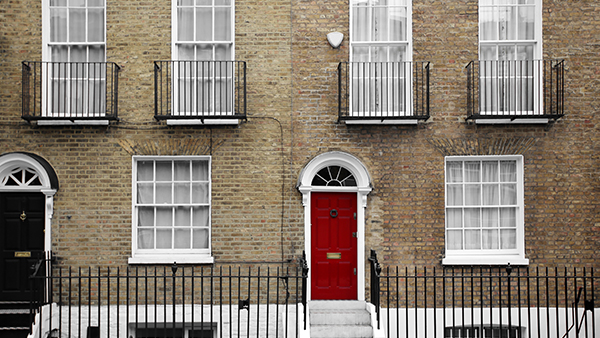- Third edition of the RSA Heritage Index from the royal society for the arts manufactures and commerce puts northern and western areas on top, such as Conwy, Monmouthshire and Ceredigion
- Former industrial and mining areas – such as Torfaen and Blaenau Gwent – top list for ‘heritage potential’, suggesting more can be done to better promote and preserve the heritage of south Wales.
- The report argues that heritage could be a means of recovery for local areas in the wake of the Covid-19 pandemic.
- England, Scotland and Northern Ireland rankings are also available. Please contact will.grimond@rsa.org.uk for these datasets.
A new report shows that South Wales is rich in heritage assets — but which are not being used to their full potential.
The RSA Heritage Index, in collaboration with The National Lottery Heritage Fund, is built from a multitude of different factors affecting an area’s heritage, from listed buildings, levels of public participation, funding streams and more, to reflect the state of heritage in Wales and the UK today. Conwy, Monmouthshire and Ceredigion topped the index, reflecting successful local efforts to preserve and promote their heritage.
| Heritage Index Ranking: Top 10 | |
| 1 | Conwy |
| 2 | Monmouthshire |
| 3 | Ceredigion |
| 4 | Merthyr Tydfil |
| 5 | Gwynedd |
| 6 | Newport |
| 7 | Pembrokeshire |
| 8 | Denbighshire |
| 9 | Powys |
| 10 | Torfaen |
Alongside the overall index, it further includes a measure of ‘heritage potential’ – areas that have strong but untapped heritage assets. These were mainly in southern areas, with Torfaen coming out on top.
The report argues that these areas could do more to promote and preserve their heritage as part of a post-Covid recovery. It further suggests that the UK government should give more attention and resources to developing heritage strategies in these areas as part of its ‘levelling-up’ agenda, which saw it make promises of new funding for former industrial towns in England and Wales.
There are some signs that new approaches to heritage in South Wales are making a difference. Merthyr Tydfil and Newport both jumped 5 places since the last edition of the index in 2016, rising from 9th to 4th and 11th to 6th respectively.
| Heritage Potential Ranking | |
| 1 | Torfaen |
| 2 | Blaenau Gwent |
| 3 | Merthyr Tydfil |
| 4 | Newport |
| 5 | Cardiff |
| = | Vale of Glamorgan |
| 7 | Swansea |
| = | Flintshire |
| 9 | Bridgend |
| 10 | Caerphilly |
Through the index the RSA also hopes to broaden our understanding of what heritage constitutes. Building on previous work on heritage and inclusive growth, the report puts forward the case for the heritage sector as a vehicle for economic recovery in the wake of the pandemic. Previous iterations of the index have been used by local authorities to develop heritage strategies for their areas.
The report also warns that more needs to be done to protect the heritage sector. While the pandemic has led many to reconsider the importance of parks and open spaces in local areas, and created an increase in ‘staycationers’ – the Office for National Statistics says that 25% of UK citizens will holiday in the UK this autumn, and only 5% abroad – many of the country’s heritage institutions have suffered enormous financial losses from lockdowns and social distancing measures.
The report’s authors argue that heritage does not need to solely focus on traditional, built assets, and that heritage also constitutes shared experience, local histories and ‘intangible’ heritage. In the context of new movements to rethink the history of Wales and the UK more broadly, the report calls for a new, inclusive approach to heritage.
The report comes with an interactive map, where you can find your local area.
Hannah Webster, senior researcher at the RSA, said:
“Wales is bursting with history, reflected in the millions of tourists who flock here every year. But all-to-often the South is overlooked as a key heritage site, not just in Wales but in the UK as a whole.
“We would like to see more done – by local authorities, governments in Westminster and Cardiff, and the heritage sector itself – to promote the diverse and interesting history of South Wales. Heritage could be a platform for an inclusive recovery for Wales, and is a great means of keeping economic growth, jobs and opportunities within communities, and creating a sense of civic pride.
“More widely we’re asking: what’s next for the heritage sector? It certainly needs support from government to keep things going, but we are hopeful that it can come out of the pandemic with a new generation of supporters. Lockdown has forced us to think more intensely about our local areas, and we’ve seen a colossal uptick in staycationers this year.
“Rethinking how we use our heritage is imperative if the industry is to thrive in the 21st century. The heritage sector, local authorities and others should be looking at how they can use their untapped assets, and how the sector can build back to a more inclusive vision of heritage.”
Ros Kerslake, Chief Executive of The National Lottery Heritage Fund, said:
“For many heritage organisations across the UK 2020 has been the most challenging year to date, and has brought into even shaper focus the heritage on our doorstep, and the contribution it can make to jobs, skills, tourism, economic prosperity and wellbeing.
As it becomes clear that the impact of the coronavirus pandemic will have longer-term consequences for the UK heritage sector, our focus as a funder will be towards sector recovery and resilience, including through the welcome support of Government’s Culture Recovery Fund for Heritage.
The Heritage Index is the perfect place to start understanding the full potential of heritage in local areas, bringing more people into the conversation, and imagining how this can play a leading role as we emerge from the Covid-19 crisis.”
Help keep news FREE for our readers
Supporting your local community newspaper/online news outlet is crucial now more than ever. If you believe in independent journalism, then consider making a valuable contribution by making a one-time or monthly donation. We operate in rural areas where providing unbiased news can be challenging. Read More About Supporting The West Wales Chronicle

























